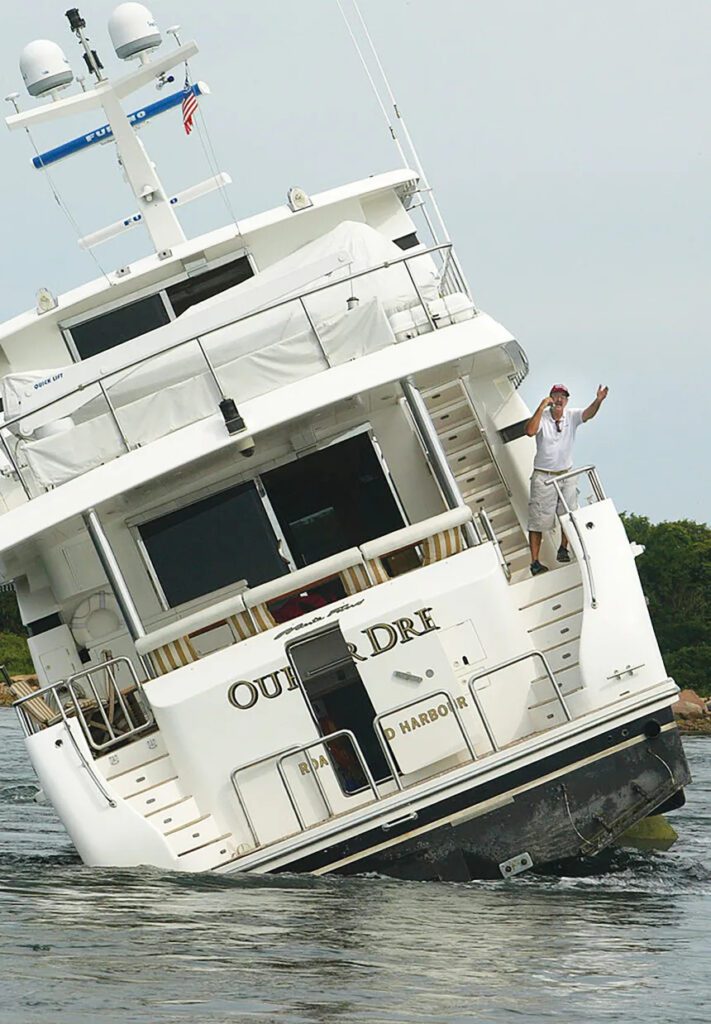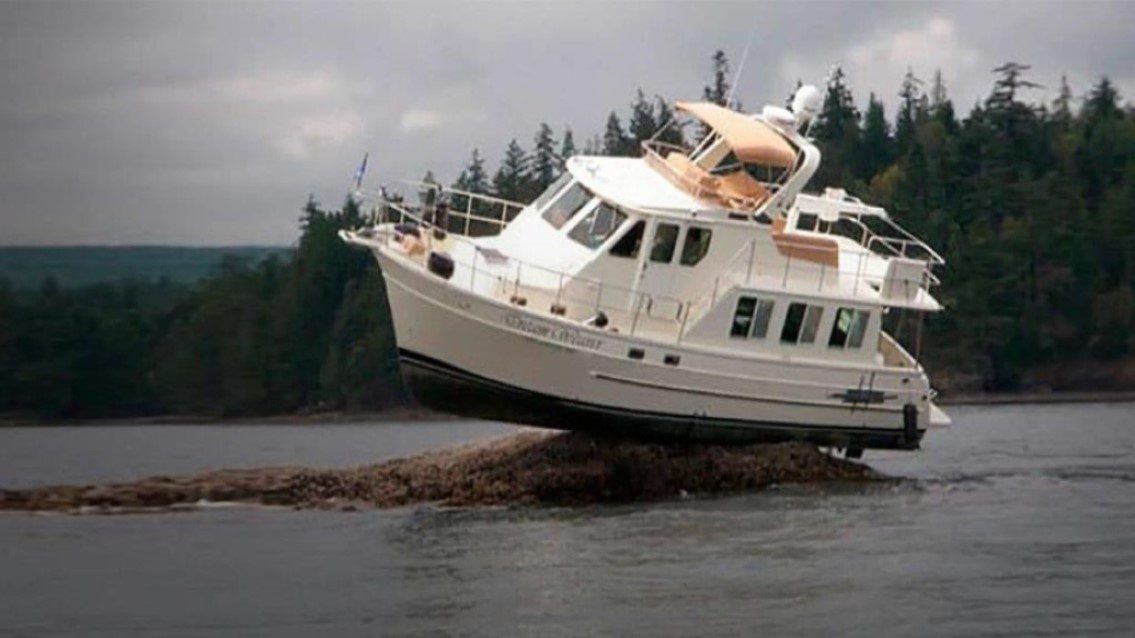
Cruise for long enough and you’ll touch bottom. What’s the plan for when you do?
Getting Grounded
Sooner or later you’re going to run aground. What you do next will determine just how much it’s going to cost you.
If you’re like most of us, it’s something that’s always in the back of your mind, like the possibility of an IRS audit or a speeding ticket. The thought persists because you know that no matter how careful you are, accidents will happen, and sooner or later this one will happen to you. Running aground is, alas, part of boating.
Actually, I prefer the term “touching bottom,” as it doesn’t sound so final; you can imagine touching bottom as a momentary misstep from which you can quickly recover, whereas “grounding” implies an unpleasant finality. But whatever you call it, it’s inevitable, and even if this is one box you’ve already checked, it’s probably going to happen to you again, so it pays to be prepared. Damage from grounding is often needlessly compounded because the helmsman panics or lacks a coherent recovery strategy. So here are some guidelines to help get you off with minimal pain and suffering.

The amount of damage incurred from a grounding is directly related to the hardness of what you hit and the speed at which you hit it. While it’s easy to determine the latter, the former is often a mystery, and that’s why you need a plan. Raging emotions may argue for aggressively powering your vessel back the way she came, but prudence demands that you first shut down your engines and post a lookout while you reconnoiter. You shut down your engines because even though you may be hung up on “just” a sandbar, you need to avoid sand and debris being sucked into your engines’ cooling systems, which can lead to overheating and further complications.
Reconnoitering involves visual evaluation. First, go below to make sure nothing untoward is occurring in the ER, such as rising water or clogged strainers. Next, if possible, jump overboard to see exactly what’s holding your boat in place. Obviously a mask and fins makes this a lot easier, and you may want to rig a lifeline as well.
Once you know that your boat is in sound condition and you’ve figured out what it is you’re hung up on, you can formulate a proper extraction strategy. One thing your dive should have revealed is precisely where and how your boat is hung up, a crucial piece of information. If the hull is grounded but the props are clear, you’ve dodged a bullet, and powering off in reverse is a practicable option. But before you do, consult your chartplotter and visually scan the area so that you can lay a clear course out of your predicament. It’s not uncommon to power off one obstruction and right onto another. As you move into deeper water, keep an eye on your temperature gauges to make sure your raw-water intakes are clear and allowing cooling water to get to your engines.
If you’re hung up on rocks or coral, you’ve likely incurred hull damage—hopefully nothing more serious than gouged gelcoat. If you haven’t gone too far aground, you can probably power off, but prepare yourself for some unpleasant grinding and more gelcoat damage. The good news is that you can lose all of the gelcoat and a fair amount of the laminate without compromising watertight integrity. Even so, once you’re off, take another look below to check for leaks before you make the run for home. If leaks are present, you’ll want to remedy that and/or contact the Coast Guard and make them aware of the situation.
If your props are in contact with the bottom, you need to proceed with caution. Even if you’re in sand, your prop blades may be bent or nicked, and trying to power off can exacerbate the damage. The best solution is to wait for the tide to float you off—admittedly not always practical. If that’s not an option, there’s probably a towboat in your future, and I regret to inform you that when he pulls you off, he’s probably going to further mangle your expensive propellers. Take heart from the fact that props, being made of comparatively soft bronze alloy, act as a kind of shock absorber, preventing damage to more expensive components such as stainless steel propshafts, couplings, bearings, and even engine mounts. If you think repairing a prop is expensive, you obviously have never had to pay to replace a prop shaft, or worse, repair and realign an entire drivetrain.
And that brings us back to the main consideration in a grounding: limiting the damage. You may not be able to avoid prop damage, but you can protect the rest of your propulsion system. So if you’re lucky enough to power off from a grounding, apply the throttle gingerly as you head home. Even minor prop damage will cause some imbalance in the prop blades, and if you sense vibration, throttle back until it goes away, even if you’re reduced to displacement speed. If the vibration won’t go away even at a slow rpm setting, you’ve probably got severe damage and should call for a tow. It may cost you a few bucks, but vibration can damage any number of propulsion system components. Better to limit the damage and endure the cost and ignominy of a tow than face the pain of a big yard bill.

